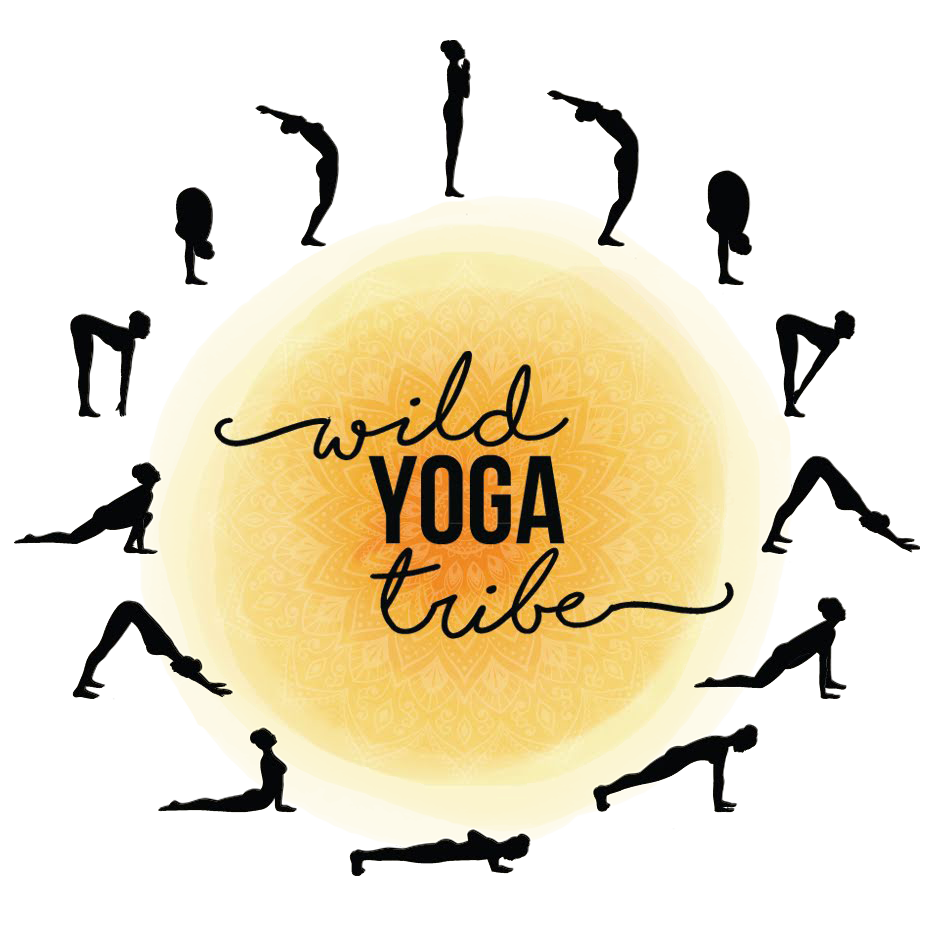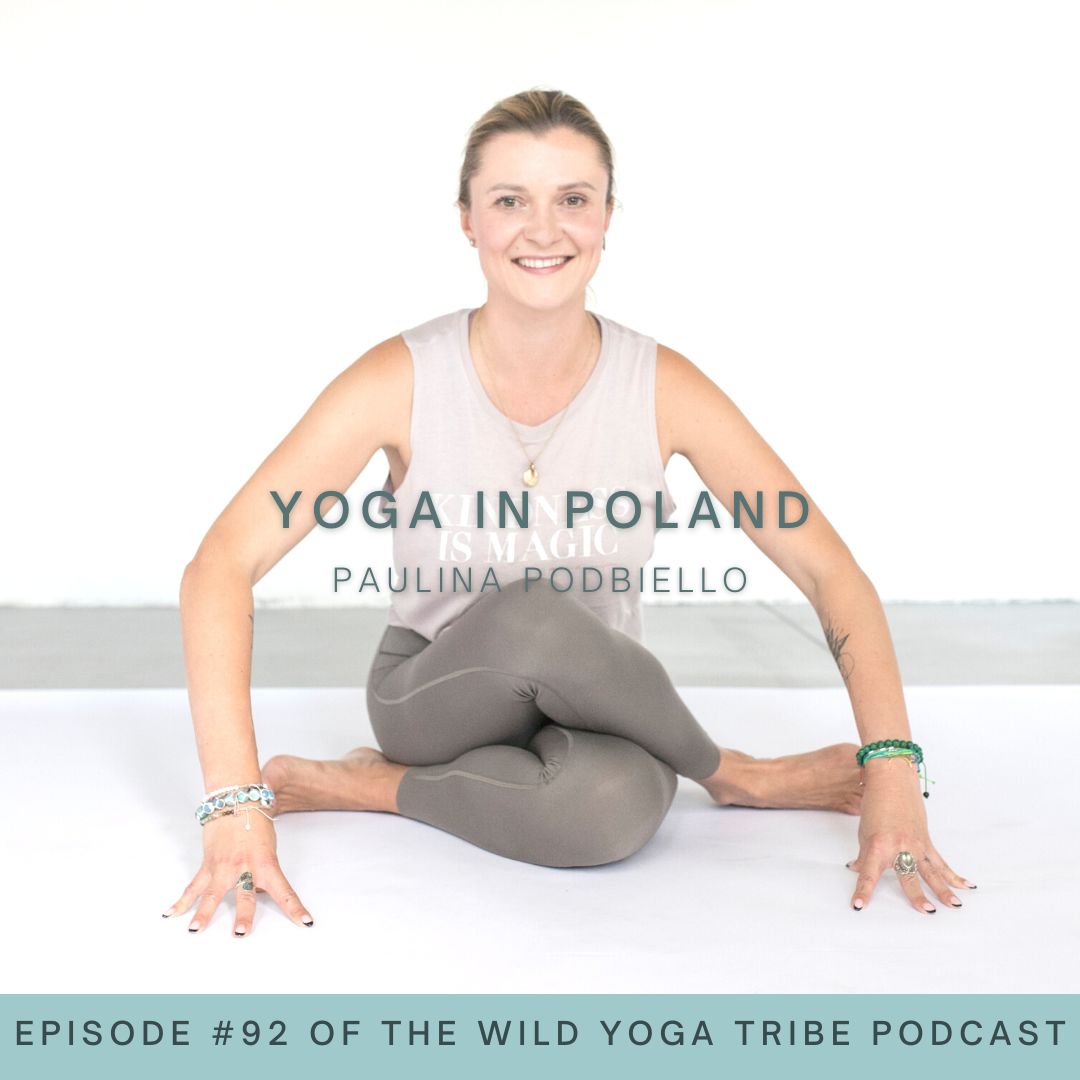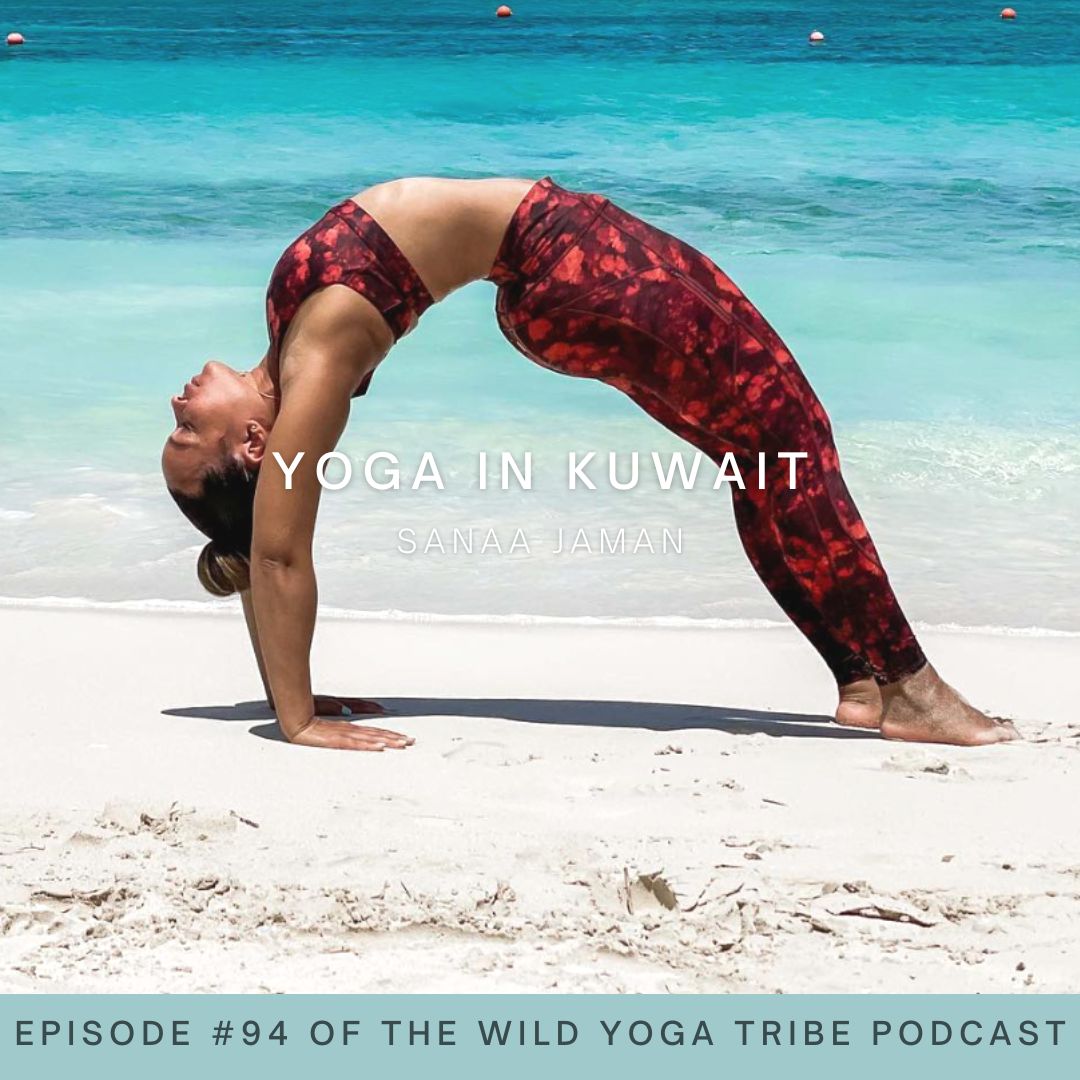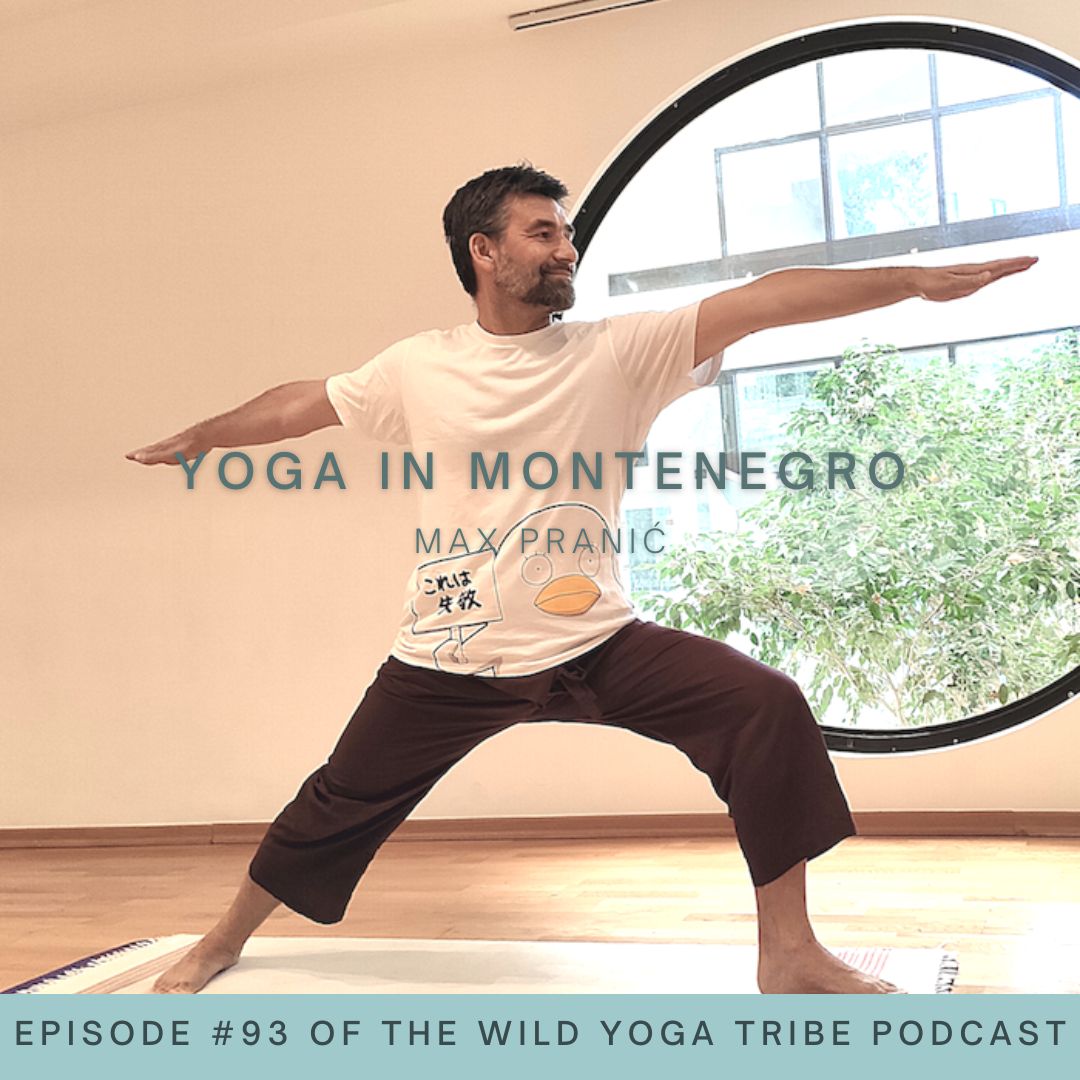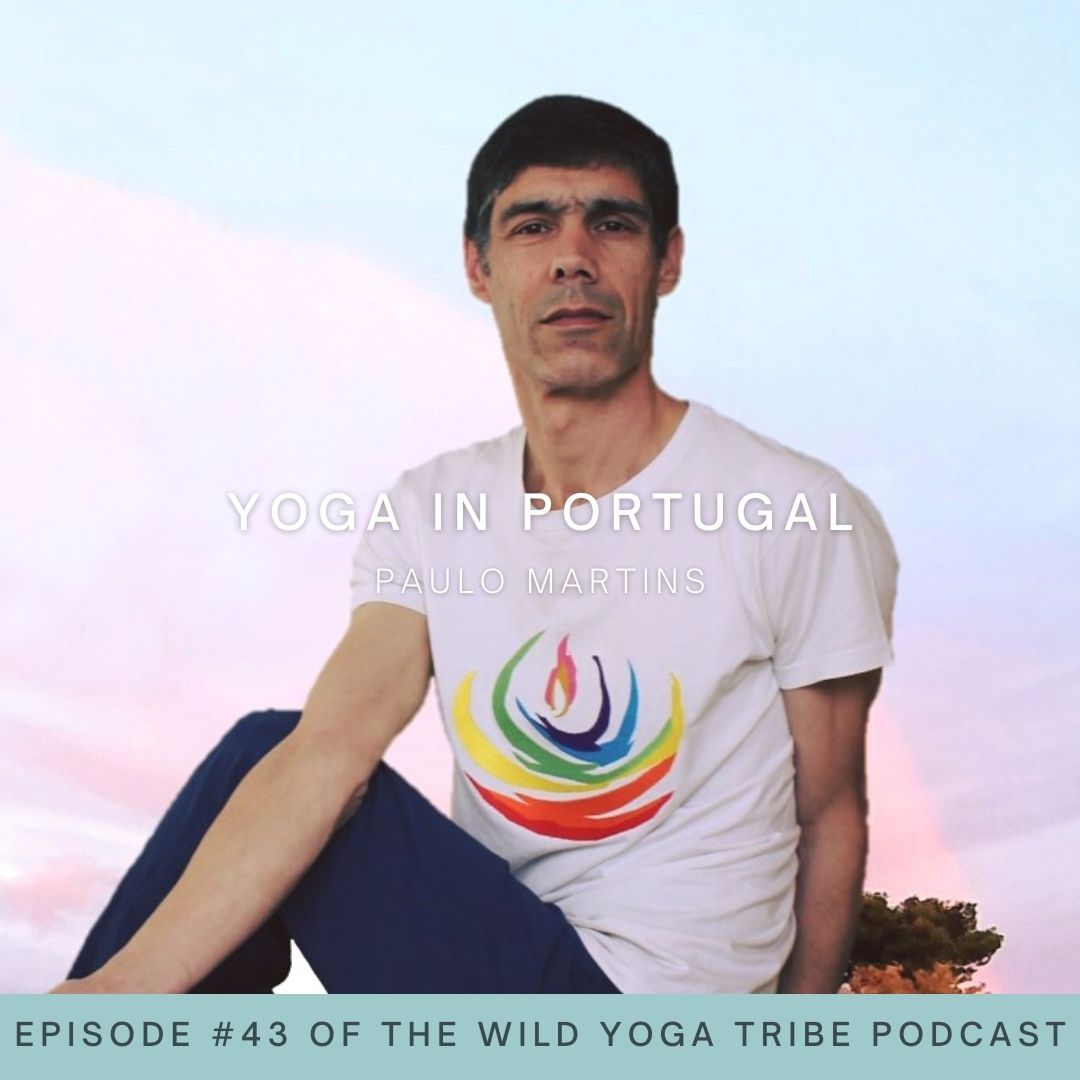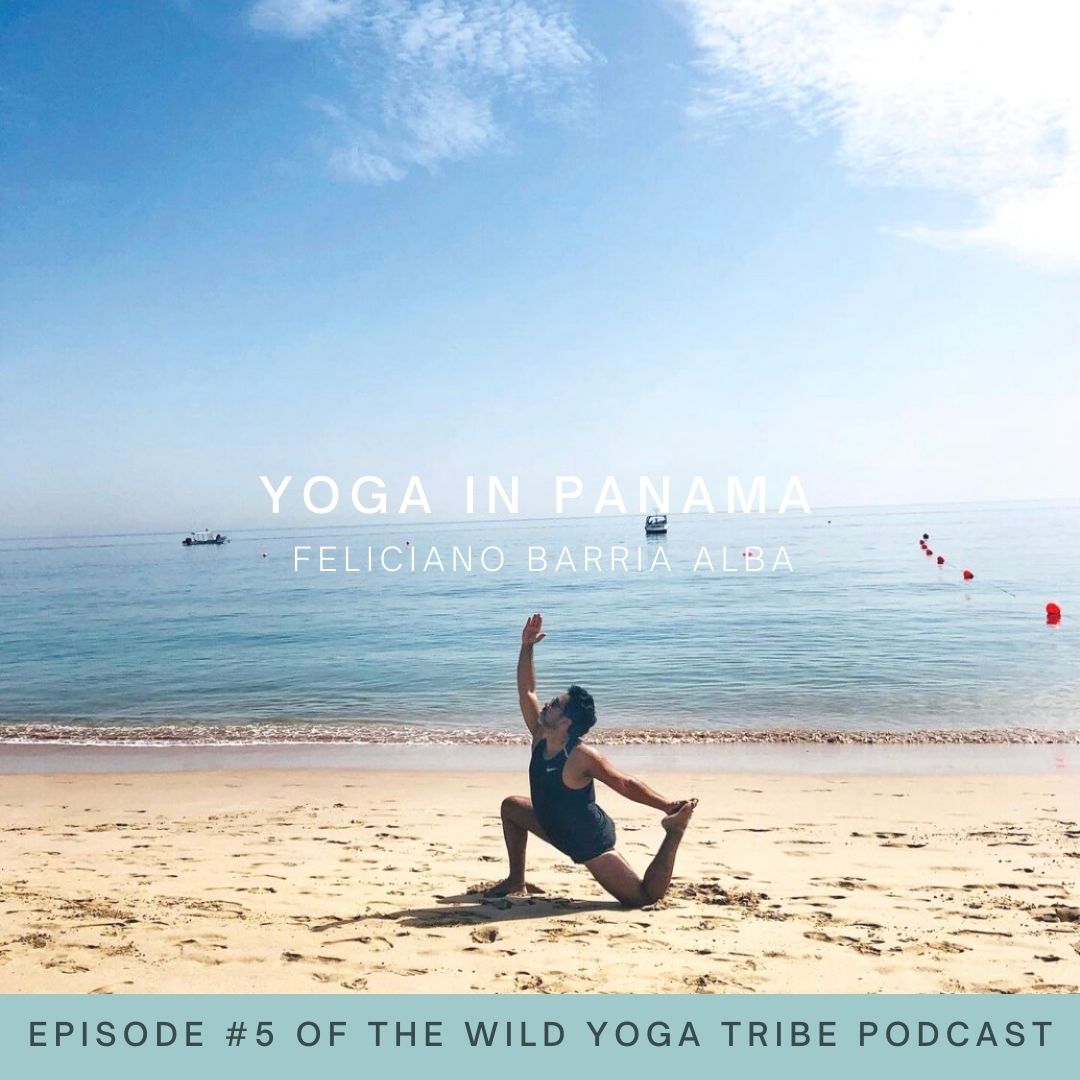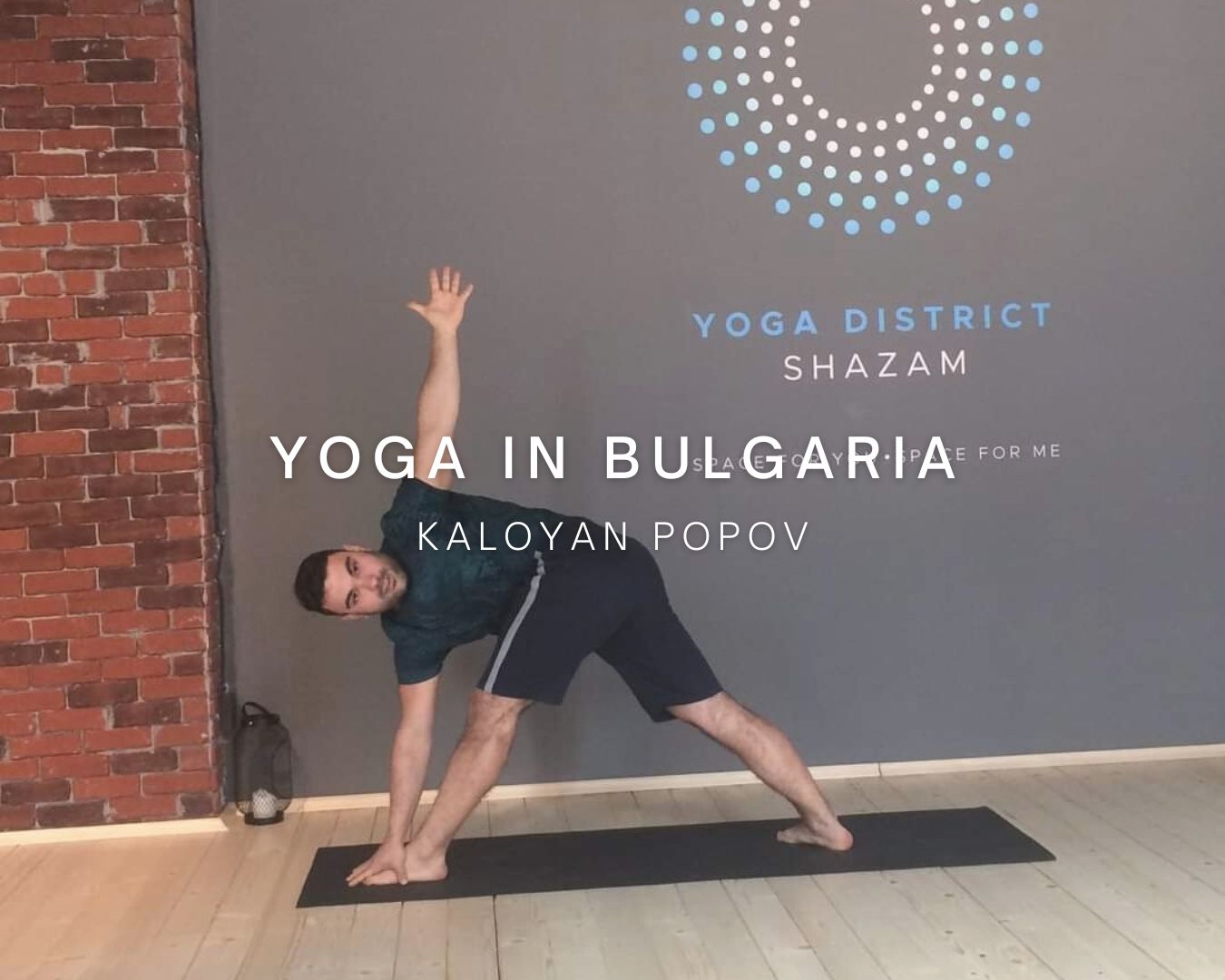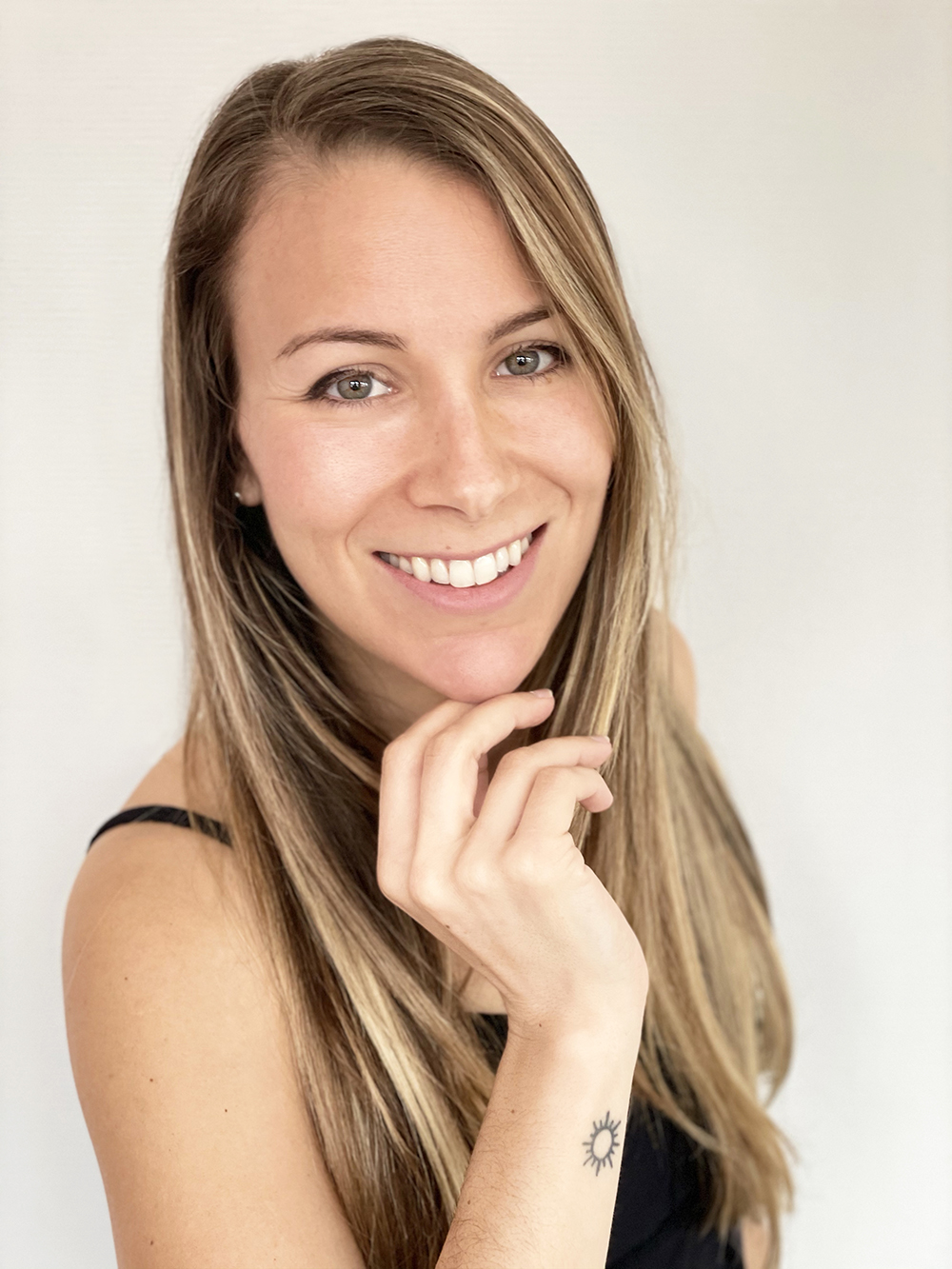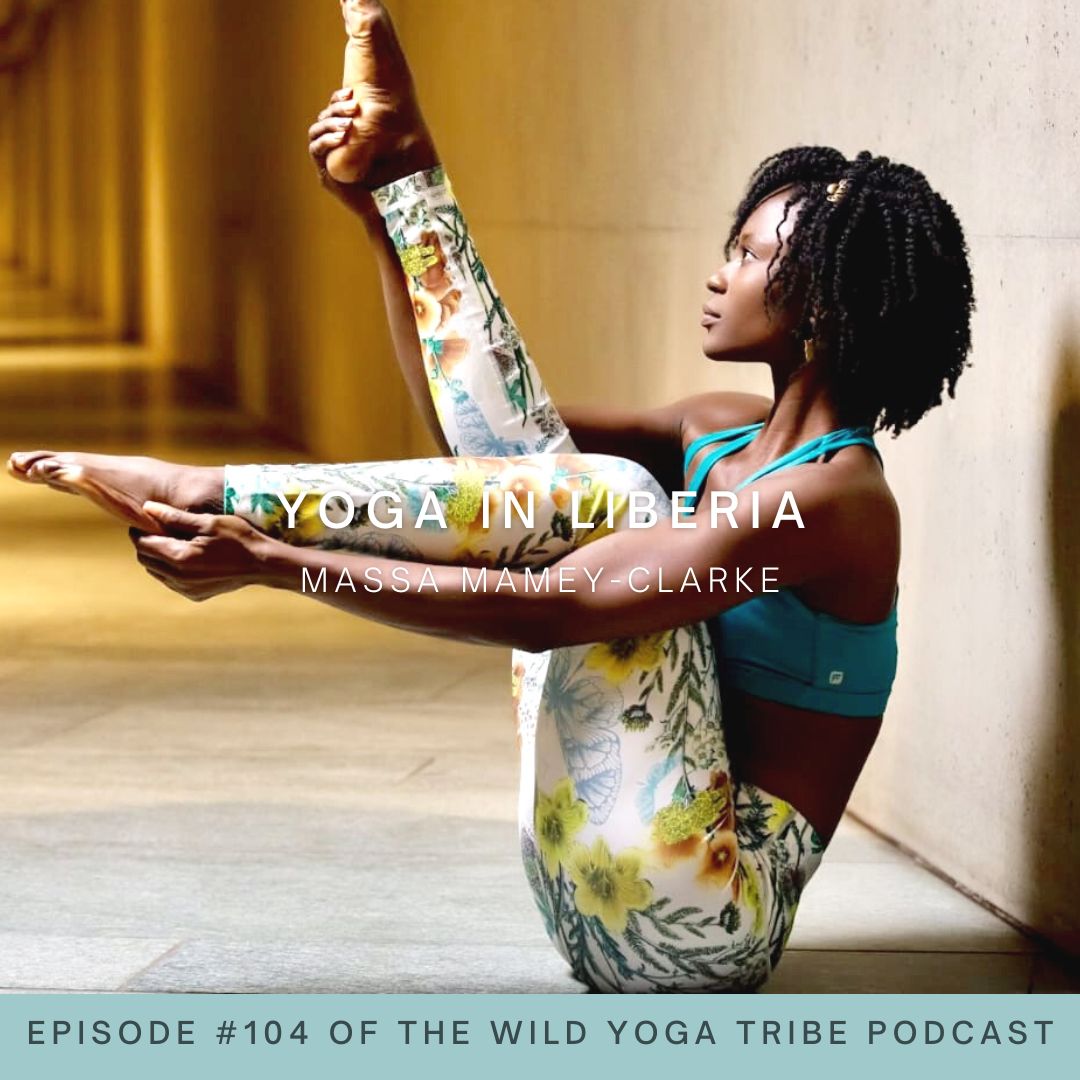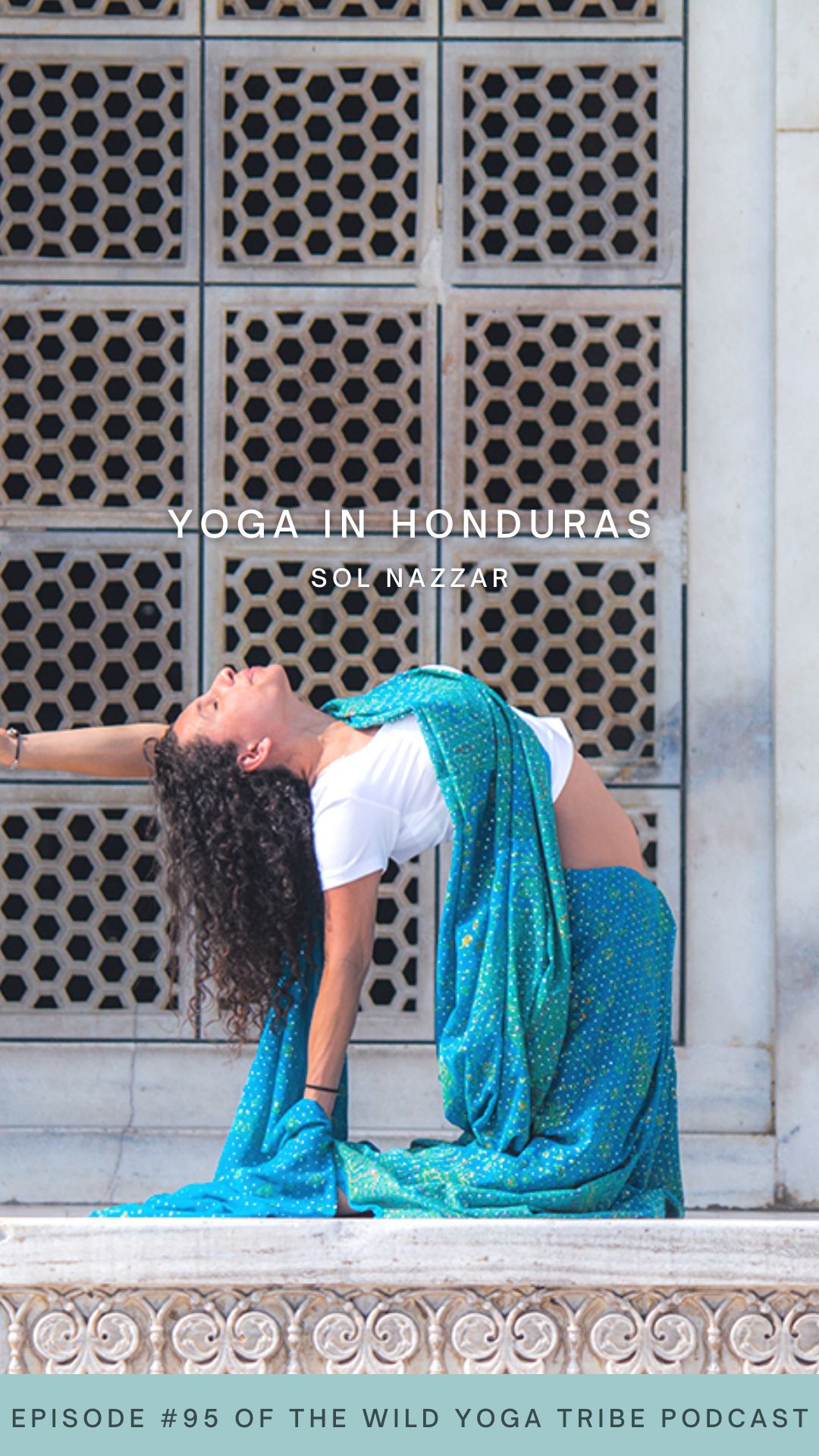
EPISODE #95 – YOGA IN HONDURAS
Meet Sol Nazzar
Meet Sol Nazzar, a radiant yoga teacher from Honduras, whose transformative classes blend various yoga styles with artistic expressions like dance and theater. Through her family’s studio, Yoga’s Garden, Sol spreads positivity and inspiration, embodying the essence of yoga as a unifying force in the flourishing yoga community of Honduras and beyond. Welcome to yoga in Honduras!
Wild Yoga Tribe Podcast Episode #95 – Family Yoga, Yoga as a Family – Yoga in Honduras with Sol Nazzar
Welcome to Episode #95 of the Wild Yoga Tribe Podcast! My conversation with Sol Nazzar, a yoga teacher from Honduras, was so beautiful as we dove into her history and how getting in tune with yourself helps you to be inspired by your true nature. I hope that this conversation made you want to travel to learn more from yoga teachers around the world just like Sol and I both have done. And how it has changed both of our paths because of it – it can change yours as well! If you’re looking to tune into a podcast episode that is all about Honduras then this is the conversation for you.
Tell me more about Sol Nazzar
Sol Nazzar, a yoga teacher from Honduras, began her training as a yoga facilitator at the Yoga’s Garden, where she has been teaching since 2004 to date; certifying with Yoga Yoghismo (Mexico) and the Institute of Yoga Studies (Spain), endorsed by Yoga Alliance; of which she later forms part as a yoga teacher trainer. Sol has been invited to participate as a facilitator of knowledge in the field of Yoga and dance to Mexico, Nicaragua, Argentina, Bolivia, Peru, Chile, France, Poland and Spain.
Sol has taken workshops in the lineages of Ashtanga, Iyengar, Kundalini, Sivananda, Jivamukti (Spain) and Vinyasa (England) and has completed a certification course at SVYASA Yoga University, in India. Moreover, she has completed a hatha yoga certificate at Swasti Yoga Shala in Rishikesh, India as well as a Sound Healing certificate.
In fact, Sol Nazzar has created her own style to transmit the experience of yoga by combining his experience in capoeira, dance, body expression and theater, she shares in her practices the fluidity of the organic movement of the human body and the meditative pauses similar to the silences in the music of nature. The philosophy of Yoga has as its fundamental pillar the integrality of the universe. Sol has managed to integrate dance into her practice and vice versa, inviting everyone to discover their dance to life with fluency and awareness.
What to expect in the Yoga In Honduras episode of the Wild Yoga Tribe Podcast
Sol Nazzar is a radiant yoga teacher hailing from Honduras. Sol’s name, meaning “sun” in Spanish, perfectly captures the radiance she brings to her dynamic and transformative yoga classes. With 20 years of teaching experience under her belt, Sol’s journey has led her to integrate various yoga styles, including Ashtanga, Iyengar, Kundalini, Sivananda, Jivamukti, and Vinyasa into her teaching. But it doesn’t stop there; she infuses her classes with her deep love for capoeira, dance, body expression, and theater, creating a unique and mesmerizing experience for her students.
What sets Sol apart is her deep-rooted connection to yoga, which she inherited from her family. Growing up, her father’s life-changing encounter with an Indian guru led him to embrace yoga wholeheartedly. Her mother, while pregnant with Sol, also practiced yoga, creating an aura of positivity and mindfulness that surrounded her family from the very beginning. Their Sunday ritual of exploring different yoga asanas together laid the foundation for a lifelong passion for yoga and a love for sharing its profound benefits with others.
In her conversation with podcast host, Lily Allen-Duenas, Sol reflects on her transformative journey into becoming a yoga teacher. She humbly acknowledges that she never planned on teaching but believes that she is not merely instructing; instead, she guides her students through a liberating experience. Her journey unfolded through international travel and exploration, where she discovered the powerful interplay between yoga and various artistic expressions like dance, capoeira, and theater. This creative fusion became the cornerstone of her teaching philosophy, allowing students to break free from rigidity, transcend competition, and connect with their true selves.
As a teacher, Sol radiates a magnetic energy that draws people from all walks of life into her classes. Her inclusive approach welcomes all, and she beautifully encapsulates the essence of yoga as a tool for personal growth and self-discovery. Through her travels and experiences, Sol has connected with a global network of yoga practitioners and teachers, building bridges and weaving webs of connection that transcend geographical boundaries.
In the backdrop of Honduras, where yoga was once met with skepticism and misconceptions, Sol’s perseverance and passion have contributed to its blossoming acceptance. Her family’s studio, Yoga’s Garden, has been a guiding light, offering a sanctuary where students discover the true depth of yoga beyond physical postures. The studio’s nurturing environment has attracted practitioners from diverse backgrounds, fostering growth in not only asana but also meditation and energy work.
Sol Nazzar is a beacon of light in the yoga world, spreading positivity, love, and inspiration wherever she goes. Her unique teaching approach, blending yoga with artistic expressions, has touched the hearts of countless students, inviting them to embrace their authentic selves and embark on a journey of self-discovery. Through her extensive travel and connections, she embodies the essence of yoga as a unifying force that transcends borders and cultures. As yoga continues to flourish in Honduras and beyond, Sol’s heartfelt dedication to her craft and her warm, positive spirit serve as a powerful reminder of the transformative power of this ancient practice.
Favorite Quote From Sol Nazzar
“An asana practice is not a competition, it’s an exploration to find your own guru, your master, it’s yourself and it’s inside of you.”
What’s in the Yoga in Honduras?
Feel like skimming?
What was it like to “grow up” with yoga?
Yoga as a family activity every Sunday
Why incorporate dance, capoeira, body expression, and theater into yoga?
How to find your own inner guru?
Yoga is an everyday methodology
Connect with Sanaa Jaman
https://www.facebook.com/YogasGarden/
https://www.instagram.com/solnazzar
https://www.instagram.com/yogasgarden
Support the podcast:
https://www.patreon.com/wildyogatribe
Want more?
https://wildyogatribe.com/thepodcast/
Everything you need is just one click away! Check out all the resources here: https://linktr.ee/wildyogatribe
PODCAST TRANSCRIPTION
Read + Reflect + Respond
Wild Yoga Tribe Podcast Episode #95 Yoga in Honduras with Sol Nazzar Transcription
[00:00:00] Lily Allen-Duenas: Namaste family. Welcome back to the wild yoga tribe podcast today. I am so excited. I’m over the moon actually to have Sol Nazzar and if you recognize my little joke, it’s because soul’s name means sun in Spanish. So I’m over the moon to have Sol here on the podcast. Sol Nazzar is a yoga teacher from Honduras.
She’s been teaching yoga for 20 years, integrating her diverse training in Ashtanga, Iyengar, Kundalini, Sivananda, Jivamukti, and Vinyasa styles. She combines her experiences in capoeira, dance, body expression, and theater to create these really unique yoga classes.
She teaches yoga internationally and at the Yoga’s Garden in Honduras. So thank you so much Sol for being with me today.
[00:00:53] Sol Nazzar: Oh, thank you, Lily, for inviting me to this amazing podcast. I’m happy to feel that our conversation is going to travel all over the world. It’s amazing what you’re doing. I’m very happy to be here. Thank you. Hello to everyone who’s listening. Great. I’m a little excited to see how this is going to flow.
[00:01:20] Lily Allen-Duenas: Me too. Sol, I’m sure it’ll be beautiful, but just to start off, can you tell us about your journey into yoga, and how you became a yoga teacher. [00:01:30] What inspired you to pursue this path?
How did yoga come into your life?
[00:01:33] Sol Nazzar: Okay. So we are a family of yoga facilitators. My dad started when he was 13 years old, he was asthmatic and then there was a guru from India traveling to Central America. She spoke about pranayamas and how pranayama would help a lot of things, and in between she mentioned asthma.
My dad started practicing and never stopped. Now he doesn’t have asthma anymore, and my mother practiced yoga while she was pregnant with me and I have two brothers and one sister. The six of us, we’re still learning the whole philosophy of yoga, not just what everybody would think yoga is, which is not just asana or physical practice. I’ve been vegetarian since I was born and meditating, it’s been with me always, connecting with energy. It’s been in my life since I remember. The Asana practice, for example, was like a game for our family on Sundays.
In this way we approach different ways of putting our body through asanas. [00:03:00] I discovered that doing this when I was very small helped me to not to be afraid to do something new. I really never thought I was going to teach, and I really feel that I’m not teaching, I am just guiding an experience. I studied business administration and I started traveling for three years. When I came back, already my mom and my dad, they had the studio.
I started teaching over there, but then I realized that while I was discovering something inside of me. When I was guiding these practices people attending the classes were also discovering something that were leading them to feel a lot more better with them and then realizing that everyone around them would like that. Then just, life is easier in this way and even though that people started, coming to Yoga’s Garden because, I don’t know, my psychology said that I have to come, or, I don’t know, I have a back pain, or I can’t sleep, or something not necessarily related to yoga, like they wanted to heal, something but then, because [00:04:30] I think that the fact that we are a family and our way of living is always trying to be lead by all this philosophy of yoga and, the deep thing yoga is, so I think that this brings people to get deeper, so this opened a space to not just teach asana, but also to start opening spaces to meditation and the energy that we have been building in Yoga’s Garden with the help of everyone who’s stepping inside and having an experience there.
It has a vibration that, for example, Vipassanas happen in space and people from India also come to yoga’s garden. Basically I feel integrated with myself and with people around me and with nature and all this energy through guiding these experiences.
[00:05:39] Lily Allen-Duenas: Yeah, that’s, it’s so powerful, sol, that you grew up with yoga as a family, practicing every Sunday together and knowing that your mom did yoga when you were in her womb. Just that all that energy swirling around you and your family, your loved ones. It’s just, it’s really beautiful.
I also know that you incorporate dance [00:06:00] and capoeira and these body expressions and theater into how you teach yoga. I would love to hear you tell us more about how these elements complement or enhance the classical practice of yoga.
How do other movement modalities and elements compliment or enhance the classical practice of yoga?
[00:06:13] Sol Nazzar: Yeah, I always loved dancing and I always loved every artistic expression. When the expression comes from your heart, it’s really touching your essence and it’s liberating something.
When I started teaching dance classes, and body expression and also that people come to yoga classes. The combination was amazing because, for example, you, as humans, may be in the middle of a class, a yoga class, or dance class, you’re like looking at your neighbor.
Or the teacher and always trying to compare and to do the same or to do it better. Or, sometimes there’s even a competition, maybe not to your neighbor, but also to yourself. And I feel that an asana practice is not a competition, it’s an exploration to find your own guru, your master, it’s yourself and it’s inside of you.
And[00:07:30] to listen to your nature, that voice inside of you that we usually have, that intuition, so getting in touch through these artistic techniques of how to move without thinking gives you the freedom to find your asana. Get in touch with your feelings and eventually get steady in that asana and enjoy yourself in that asana and not think oh my god this is not alignment but that you feel comfort and then you can. Just breathe in that asana not just movements of your body, but movements of your thoughts and your emotions, then you just can stay, without that lot of movement, and enjoy yourself, enjoy your nature.
Because I felt that my dancing gives me knowledge also of my true motion, for example articulations and how to put them, how to get to one asana from the other one and what’s happening in between. It helps me also to stay in my body and not to travel in the past or in the future with my [00:09:00] thoughts and just to be there.
A tour around South America of yoga and dancing workshops
[00:09:03] Sol Nazzar: I started doing this tour, when I lived in an ashram in the Sacred Valley in Peru. I connect with a network of yoga studios around South America. I started traveling doing this combination. First, doing a corporal expression session, then to get a yoga asana practice, and then to get a meditation. So all this combo was amazing because then like the people would just move without thinking if they21 were pretty or if they were putting the body as.
It should be like I said just not thinking and then after that, getting into the asana without having any fear or judgment for themselves and then after that, getting to a meditation. I discovered that it was a very interesting way to guide an experience from another approach that came from my journey as an artist.
[00:10:23] Lily Allen-Duenas: Yeah, it sounds like through dance, and through all of these body expression [00:10:30] modalities including theater, including capoeira, which is like Brazilian martial arts. Which does have dance elements to it, too. I feel like you’re saying it transforms the asana practice to something that’s more free.
It unlocks some of the rigidity of, you mentioned, like looking around the room or really looking outside of the body. Do you feel like incorporating all those things brings people out of the mind and more into the body in a way that just asana can’t?
Does incorporating more movement expressions to asana change the experience?
[00:11:00] Sol Nazzar: That’s right. I really think that, for example, ballet.
Ballet has a lot of rules. For example, to put it on the way, and, or if you say Ashtanga Vinyasa, they have, for example certain asanas and a way to go through, which is very interesting, I’m not saying anything is right or anything is wrong. I’m just saying that Sometimes we need a guide, like step by step, because of the way we are and then sometimes we need all the opposite. I think this is something I learned traveling, and because. I just started traveling to get the experience of another asana practices, another way of asana practices [00:12:00] and Ashtanga and, so I discovered that we as different cultures sometimes we need different approaches to our life goals. So I know that maybe for an asana practice, I need someone to tell me where to put my hand, where to put my pinky, like, where to look and a lot of voices. Sometimes I really need that. But sometimes I have too much of this in my life and I need… the whole different, totally different experience to get to the same point. I’ve learned that as long as a technique or experience can get you in contact with your true nature and that your true nature is going to guide you through your asana practice and then to your meditation, I think it’s valid.
[00:13:12] Lily Allen-Duenas: Yeah. I loved hearing you say how you traveled to other countries to see how different cultures needed yoga in different ways and just different people, right? We’re all so different and Ashtanga Vinyasa isn’t perfect for everyone. Neither is Yin. And [00:13:30] it also isn’t sometimes right for that period of your life, either things do change.
I love that you have been teaching and traveling. That’s something I did too. I’m a big believer, obviously, and the importance of learning from other people, learning their yoga methodologies, philosophies and just love that you’ve done it as well. A lot of our listeners Sol, are yoga teachers who are interested in finding more opportunities to teach yoga abroad. Do you have advice for people who are looking to travel and teach abroad? I know you have been involved in international yoga events, congresses, and photoshoots, so you can highlight anything you’d like or any advice that you have to share.
Advice for yoga teachers who are looking to travel and teach yoga abroad
[00:14:17] Sol Nazzar:
I really think that the first thing is for you to really be sure about what your intention is. What is knowing? Because learning is one intention sharing, is one. If you are really tuned with your intention and you have it very clear, this is the vibration that you are sending to the universe. The universe will get back that vibration if you’re really in touch with it.
When I’m traveling, I’m just open, [00:15:00] to every door. I remember that when I started traveling, I’m 42 years old, and when I started traveling, there was no Instagram. So the connection was like the people would say oh my god I come from this city and there’s a school there and you can go there.
I think that I really want to get in touch with people. For example, I know that media. Media is a really useful tool. But I feel that it’s a lot of energy put in there. In the end I want to get in touch with the people. I feel that… If I get in touch with that vibration, then people will just appear because actually I’m not that active on my Instagram and stuff, but still I have this opportunity to travel and connecting with teachers also and practitioners.
They will open doors everywhere. I just came from India and I met people from everywhere on the world and I have doors on all these countries. So I like building like a web[00:16:30] with people and being open, being yourself. Sometimes, yeah, it’s afraid of you, you can get afraid of being invited. For example, the first time…
Oh, my God, when I was invited in Mexico to an international event, and I said Oh, my God, yes, of course. How many people can I have in a room? They said maybe 75 people. But there were so many people for me at that moment. At the end I had 135 people in my class, and this was a period when I was first doing some dancing, and then going to the asana practice that I described before. It was proof for me that if I was true with what my journey was giving me as a tool. Then the people that are in tune with that will just come and will open the doors everywhere.
So this is the way I started traveling and learning always, sharing
[00:17:40] Lily Allen-Duenas: Yeah, it seems very organic. As you mentioned, you set your vibration, set your intention, and allowed things to manifest in that way. It sounds like your advice for other people would be, one, to travel. If you actually get into a place like in Rishikesh, like in India, where you meet people from around the world, then your opportunities will just [00:18:00] explode, right? That’s so true.
[00:18:03] Sol Nazzar: Yes. As I said before, there are a lot of ways and every one is valid, but I’ve seen teachers, I met teachers who have built a whole tree just on the web. They start writing to everyone and, this is valid and this is the way but I just don’t like to be on computers and stuff. So this is not my way, but…
Maybe I really use this tool obviously for Yoga’s Garden because I work with the Instagram of Yoga’s Garden. I know it’s another way, and maybe getting the balance of them, but I’m working on that.
[00:18:45] Lily Allen-Duenas: Yeah, the balance, right? As you mentioned, social media takes a lot of time and energy and it’s all sending it out, right? Usually with social media, energy is not coming in a positive way. It’s not filling our cups. It’s not, psychology, I think, has long proved it, that it’s a difficult space to exist in and to navigate as a yoga practitioner, teacher and facilitator, trying to do it in a way that feelsright in our hearts like that’s a challenge.
I know you’ve also spoken about your family, yoga’s garden, and that your dad started yoga when he was so young. Something I always like to ask is about what [00:19:30] yoga in your country is like? What is yoga in Honduras like? Has it been a common word that everybody knows what yoga is for 50 years?
Or is it just starting to grow? I would love it if you could paint us that picture.
What is yoga in Honduras like?
[00:19:45] Sol Nazzar: There’s still people not approaching yoga because of religious things. It’s nowadays getting more acceptable. I think everyone knows or anyone would have the idea of yoga being asana practice, for example. That’s a beginning.
Because Yoga’s Garden has been open for 20 years. When we opened the studio like that, it was very difficult to explain and for people to open.
There’s a teacher, she’s from the career of psychology in the university. Every year she brings her students for one yoga class. They have this as a tool and they can speak about Yoga as a tool, having already an experience of one class, at least one class, so they can speak about that.
Also, for example, my dad teaches yoga in a church also. [00:21:00] so it’s getting very open now. But when we started… Actually, there is a school called the Gran Fraternidad Universal, which would be the great universal fraternity. Where they study philosophy and also they have yoga classes and it was them and us.
That time teaching yoga. We needed patience. It is to say, we were very patient and I really think that is because Yoga is our lifestyle or our life guidance. So we were just open to go with the rhythm of nature, nature will bring the practice eventually to everyone, and nowadays it’s amazing because everyone wants to practice yoga because it’s fashion. Now everyone knows what yoga is, or everyone would think of yoga as an asana practice and it’s getting to be also, in some schools, there are people asking for us to teach in schools.
So for example, in the capital and it’s now more I don’t know if it is acceptable, but yeah, there are more people practicing it and wanting to practice it than 20 years [00:22:30] ago.
[00:22:30] Lily Allen-Duenas: Good. I’m glad that it’s progressing in that direction. I’m glad that more and more people are becoming open to it. That’s really great. I also would love to hear, Sol, you speak about Honduras as a whole. For our listeners who don’t know too much about your country, what about Honduras would you like us to know?
What is Honduras is like?
[00:22:49] Sol Nazzar: Okay. Yeah. Honduras. It’s a small country and it’s right in the middle of America, on this continent. So we are in very tropical weather. We have a lot of green and it’s a place, if you like, for example, diving is perfect. Perfect spot. As a country, we haven’t worked a lot in marketing.
So it’s still very virgin. We have a lot of virgin woods and mountains. For example, as I said before, the sea we have the second biggest coral reef after Australia. It’s the perfect spot to come because the weather it’s perfect. It’s never that cold and if you want to practice yoga or if you want to come and share your yoga practice here and teach where we are in the capital. [00:24:00] Open for you, Lily also, to come here and teach.
[00:24:03] Lily Allen-Duenas: Oh, thank you. I definitely want to come. I’m itching to get to Central America because I’ve really traveled very little in Central America. I’ve only visited Mexico. That’s it. So I need to get over there. Sol, this is a question I ask every guest on the podcast, I would love to hear your thoughts. It is, what is your personal definition of yoga?
What is your definition of yoga?
[00:24:27] Sol Nazzar: Yoga is a methodology, an everyday methodology to get in touch with your true nature and get in touch with your true nature gives you the capacity to connect. With all the nature around me and feel that we are all the same, one, one big energy. It’s something that you need to build every day, building that love inside of you. The yoga practice is not just to get in on top of your mat, and do your physical practice, but that’s just something to trigger your true practice outside the mat being in tune with your true nature.
[00:25:17] Lily Allen-Duenas: That’s beautiful. Thank you so much for sharing that. Sol, for our listeners who have tuned in and they want to ask you a question or want to reach out or want to learn more about coming to Honduras and taking yoga with you or anything. What [00:25:30] is the best way that they can get in touch with you? Of course, I’m going to share your website and your social media links on the show notes. Wherever a listener is listening, they can just scroll down, click the button and be connected with you. On website, wild yoga tribe. com slash yoga in Honduras. But just here on the podcast itself, how can people get in touch with you?
[00:25:52] Sol Nazzar: Okay, they can reach me through Instagram Sol. S O L. Nazzar. N A Z Z A R. Yes, and I don’t know, I would love to, to keep on learning, by traveling and meeting people all around. I really think that this podcast is a way to connect people.
Because I love the fact that to listen to every conversation that it’s meaning to share points of view, you know, around yoga. You just need to listen and a way of traveling also.
[00:26:39] Lily Allen-Duenas: Oh, thank you. Sol, it’s been such a joy to be with you. I so appreciate you sharing your wisdom and your journey with us.
[00:26:46] Sol Nazzar: Very happy too. Yay!
Wild Yoga Tribe Podcast Outro
[00:26:50] Sol Nazzar: Thank you again.
[00:26:51] Lily Allen-Duenas: Thank you so much for tuning into this episode of the wild yoga tribe podcast. My conversation with Sol [00:27:00] Nazzar, a yoga teacher from Honduras was so beautiful as we dove into her history and how getting in tune with yourself helps you to be inspired by your true nature.
I hope that this conversation made you want to travel and to learn more from yoga teachers around the world, just like Sol and I both have done and how it has changed both of our paths because of it. It can change yours as well. If you’re looking to tune into a podcast episode, that’s all about yoga in Honduras, then this is the conversation for you.
Thank you for listening to the wild yoga tribe podcast. Be well.
Copyright © 2023 Wild Yoga Tribe LLC. All rights reserved. Transcripts are generated using a combination of speech recognition software and human transcribers, and may contain errors. Kindly check the corresponding audio before quoting in print to ensure accuracy.
The Wild Yoga Tribe, LLC, owns the copyright in and to all content in and transcripts of the Wild Yoga Tribe podcasts, with all rights reserved, including right of publicity.
What’s Okay
You are welcome to share an excerpt from the episode transcript (up to 500 words but not more) in media articles (e.g., The New York Times), in a non-commercial article or blog post (e.g., Elephant Journal), and/or on a personal social media account for non-commercial purposes, provided that you include proper attribution and link back to the podcast URL. For complete transparency and clarity, media outlets with advertising models are also welcome to use excerpts from the transcript per the above.
What’s Not Okay
No one is authorized to copy any portion of the podcast content or use Lily Allen-Duenas’ name, image or likeness for any commercial purpose or use, including without limitation inclusion in any books, e-books, or on a commercial website or social media site (e.g., Instagram, Facebook, etc.) that offers or promotes your or another’s products or services. Of course, media outlets are permitted to use photos of Lily Allen-Duenas from her Media Kit page or can make written requests via email to receive her headshots folder.
